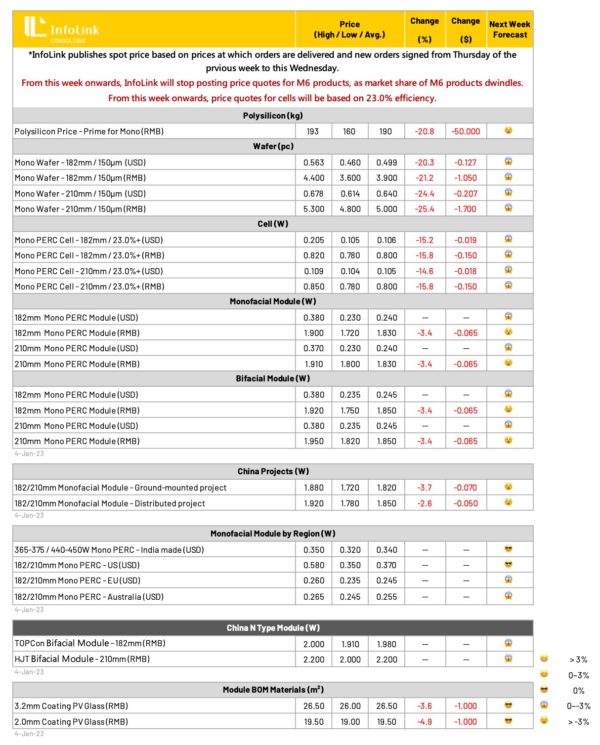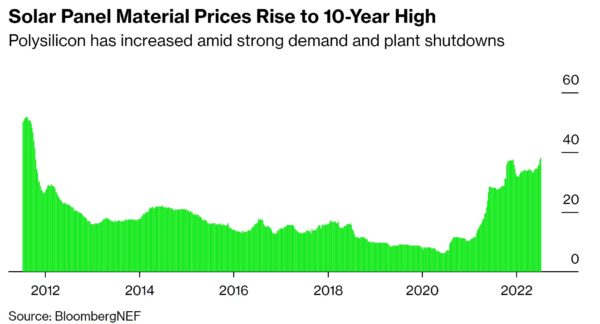A slowdown in purchasing in China, along with a massive ramp up of supply, has led to anticipated price declines for polysilicon.
According to two sources, the price of polysilicon is falling hard and fast. And while this price decline was expected, it is arriving a little sooner than most analysts had predicted.
This morning, BloombergNEF and Infolink published their polysilicon market spot prices. BloombergNEF’s chart showed the price of polysilicon at $17.51 per kilogram. We can compare that with August’s peak price of $38.32, per Rob Barnett.
This represents a 54% fall. The most expensive class of polysilicon, per Bloomberg, was over $44 per kilogram in July.
Infolink has shown similar price drops. The last price increase noted by Infolink was in a tweet from August 31, 2022, bringing the cost to 303 yuan ($43.98)/kg. Today, Infolink’s weekly spot price tally showed the market dropping by 20% over the last week, settling at 190 yuan ($27.58/kg).

The price decline for Infolink was 37%. There are differences in the products that are priced between Bloomberg and Infolink, with the Infolink product being the more premium product that is more commonly used in the high-end market today.
The recent price increase is the highest that polysilicon has been since the big prices of the late 2000’s and early 2010s as demand ramped up just before major polysilicon manufacturing ramped.
Some projections show that globally, we could manufacture up to 500 GW of solar modules in 2023, making the once explosive projection of 1 TW a year in 2030 seem very much within reach.

One caveat to these higher prices: Over the last decade, the amount of polysilicon per watt of solar has fallen by nearly two thirds. For instance, a 500 watt solar panel in 2012 (no, they didn’t exist yet), would have used roughly 3,000 grams of polysilicon, while in 2021 that number would be closer to 1,000 grams.
The $40/kg polysilicon in the 2012 module – 3 kg – would have cost $120, while the same priced polysilicon in 2021 would cost just over $40. And that’s before accounting for inflation, which effectively lowers the price an additional ~25% over the past decade.


